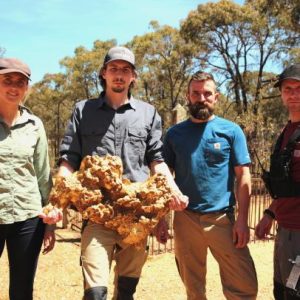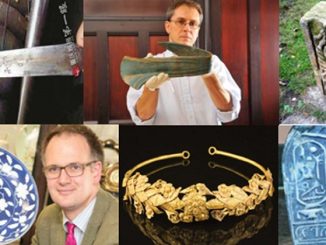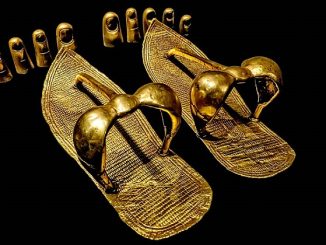He claimed he was sitting on a gold mine.
But it turns out the tale of how he found a 98-ounce gold nugget was full of holes.
James Saunders Grill said he found the giant nugget last year on his property in the Gold Rush-era mining town of Washington.

Hoax?: The giant gold nugget is real but the story of how it ended up in California is not real
Discovery: The nugget was found along the South Fork of the Yuba River in the Gold Rush-era mining town of Washington

Anonymity: When he allegedly found the nugget, James Saunders Grill did not want to be pictured from the front or known
Such was the excitement surrounding the nugget, it was on display for three months before eventually going to auction in Sacramento.
It was sold for $460,000.
According to News 10, soon after the golden discovery, a website appeared looking for investors to help develop a commercial mining operation called the Lost Scotchman Mine on the 180-acre property, suggesting the giant nugget was just the ‘tip of the iceberg’.
The website encourages investors: ‘Act now and just like the 49ers of 160 years ago, you can experience the wealth and excitement of the Gold Rush.’

ut such was the media storm around the giant nugget, word reached as far as Australia, where a man has now emerged who says he is ‘100 per cent sure’ he found the nugget there in 1987.
He has photographs and newspaper articles to back it up.
As news of the apparent fraud emerged, federal documents showed that Grill’s property – which is landlocked – has been involved in a long-running legal battle with the United States Forest Service to gain road access.
It is now widely believed that the 70-year-old made it all up so that he could increase the value of his land and settle the road dispute.
Australian prospector Murray Cox saw the story in a mining trade magazine and contacted News10., providing them with the 1987 Melbourne Sun newspaper article and photographs showing that he and partner Reg Wilson, now 62, unearthed the giant nugget in Rokewood, Victoria 24 years ago.

Real: Murray Cox, speaking to News 10 from Australia, said he found the nugget in 1987 and has evidence to prove it

Evidence: The newspaper story from the Melbourne Sun in 1987 about the actual find of the nugget

Find: A picture showing the original find of the nugget in Victoria, Australia. it was then sold for $50,000 to an American dealer
He told News 10 that he sold the nugget – which they named Orange Roughie due to its fish-like shape – to an American gold dealer in 1989 for $50,000
Mr Cox said: ‘I called them up because I knew people were being defrauded in the sale. It’s excellent that it’s been exposed, and even the auctioneer believes us now after he examined the photos.’
Fred Holabird, the Reno auctioneer who sold the nugget in Sacramento, said he was convinced it came from Northern California because it had the same appearance as others from the area.
It also came with a signed affidavit from Mr Grill attesting to its authenticity.

Appeal: After the discovery, this Website appeared seeking investors to help develop a commercial mining operation
At the time, Mr Holabird billed it as the ‘largest California Gold Rush nugget left in existence’.
He now admits that he got ‘taken as bad as anyone’ and said he was surprised no one noticed it while it was on display prior to the auction.
Though he said he is convinced that Mr Cox was the rightful finder of the nugget, he has offered to pay for scientific testing to discern where it really originated from.
But he said he hopes Mr Grill will come forward before he has to resort to this.
Mr Grill did not respond to emails or phone calls and he was not at his Washington home when News 10 called there. He is believed to be in hiding.

Gregg Millar, owner of Mineral Enterprises in Nevada City and an experienced miner, first saw the nugget at a February gold show in Tucson.
He told the Sacramento Bee there were rumours even back then based on the way Mr Grill brought the nugget to the local paper and seemed to court publicity while pleading for anonymity.
Though the nugget’s origin wasn’t doubted then, people had questions about the finder’s behaviour, Mr Millar said, and wondered whether it was all about increasing the value of his property.
Land where gold had been found could attract purchasers hoping to cash in on more finds. Mr Grill had promised to take reporters out to look for more gold on the property in May but cancelled because of weather.


